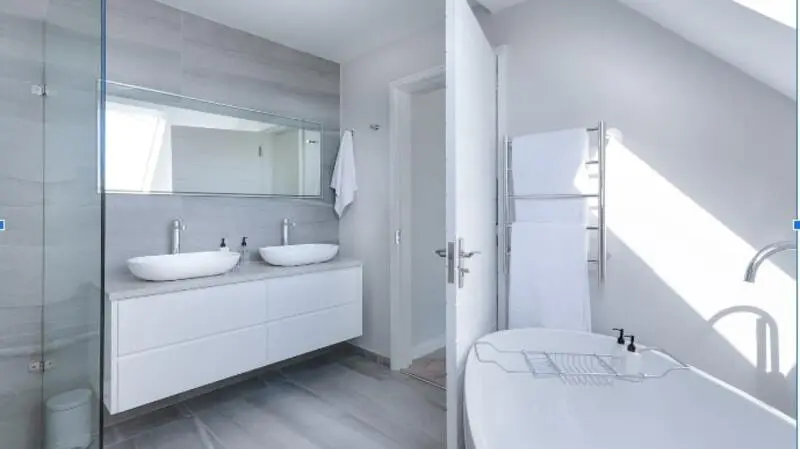Interior design is an ever-evolving field that reflects both individual preferences and broader cultural trends. As an exploration of these trends, let’s dive into two popular but contrasting styles: minimalism and maximalism. Each has its merits and drawbacks, and the choice between them often depends on personal taste and lifestyle needs. This discussion will also highlight how interior architects, particularly those in London, are integrating these styles into modern homes.
Understanding Minimalism in Interior Design
Minimalism in interior design emphasizes simplicity, clean lines, and a monochromatic palette with the use of minimal decorative elements. It’s a style that encourages decluttering and focuses on the essence of living space. Interior architects often advocate for minimalism because it creates a tranquil and functional environment. This style is not just about having fewer items in your home; it’s about prioritizing quality over quantity.
Key elements of minimalism include:
- Simplicity in Form and Layout: Furniture and decor are chosen for their functionality and simplicity. Minimalist spaces typically feature open floor plans that enhance the sense of calm and freedom.
- Neutral Colors: Shades of white, beige, grey, and black dominate the palette, creating a cohesive and serene atmosphere.
- Natural Light: Ample windows and unobtrusive window treatments allow natural light to flood the space, making it feel more open and airy.
For those considering minimalism, it’s important to understand that this style can help highlight the architectural features of a space. This is why many interior architects in London emphasize the architectural rather than decorative aspects when designing minimalist homes.
The Appeal of Maximalism in Interior Design
On the opposite end of the spectrum lies maximalism, a style characterized by the richness in colors, patterns, and textures. Maximalism allows for personal expression and the display of collected items, making each space unique. This style is all about abundance and sensory richness, making it a popular choice for those who find joy in artifacts and artworks.
Features of maximalism include:
- Bold Color Schemes: Unlike the restrained palette of minimalism, maximalism thrives on vibrant colors and often incorporates multiple hues in a single area.
- Eclectic Mix of Patterns and Textures: Layering various patterns and textures is a hallmark of this style. From plush fabrics to intricate wallpapers, maximalism embraces complexity.
- Personal Collections on Display: Personal items and collections are a focal point in a maximalist home, showcasing the resident’s personality and experiences.
Choosing maximalism often means embracing chaos to a certain degree. It’s a style suited for those who find beauty in the eclectic and who feel that a house becomes a home when filled with memories and stories.
Deciding Between Minimalism and Maximalism
When deciding between minimalism and maximalism, consider the following factors:
- Lifestyle: Do you prefer a serene retreat or a vibrant sanctuary? Your daily habits and preferences should guide your choice.
- Maintenance: Minimalist spaces are easier to clean and maintain, while maximalist ones require more effort due to the abundance of objects and finishes.
- Space Size: Smaller spaces tend to benefit from minimalist designs as they appear larger and more organized. Larger spaces can handle maximalist decor without feeling cluttered.
Complementary Styles and Hybrid Approaches
It’s worth noting that interior design doesn’t have to be strictly minimalist or maximalist. Many interior architects in London are now blending elements from both to create balanced, personalized spaces. For instance, you might see a minimalist architecture with a few maximalist elements to add warmth and character or vice versa.
Hybrid styles can include:
- Scandinavian Minimalism: Combines the clean lines and functionality of minimalism with cozy elements like warm textiles and wood.
- Bohemian Maximalism: Focuses on vibrant colors and eclectic patterns but can be grounded with minimalist furniture to prevent overwhelming the senses.
Whether to choose minimalism or maximalism in interior design is a personal decision that depends on your aesthetic preferences, lifestyle, and the specific characteristics of your living space. Both styles offer unique benefits, and with the help of skilled interior architects, such as those you might find in London, any space can be transformed to reflect your desired ethos. Remember, the ultimate goal of interior architecture is to create environments that enhance the well-being and comfort of its inhabitants, whether through simplicity or abundance. Keep up-to-date and connected by frequently visiting Pulse Life Magazine for the latest news and to pose any questions you might have.
